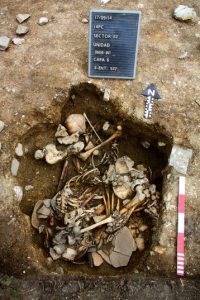Excavations of Pacopampa, an ancient ceremonial site in Peru’s northern highlands, led to the discovery of remains of 104 individuals, 7 of which bore significant physical injuries interpreted as ritual violence.

Archaeologists unearthed skeletal remains dating back to between 13th-6th century BC. All individuals bore remains of appalling injuries. In all the researchers uncovered the remains of 104 individuals, 7 of which bore significant physical injuries, such as fractured skulls, facial and limb fractures, and a dislocated elbow joint. Examination of the skeletons suggested all were aged 35 or older. No signs of malnutrition were found and some presented evidence that severe bone fractures had been healed. According to the researchers of the joint Japanese-Peruvian research team the evidence suggests that these individuals were repeatedly assaulted, but apparently not with sharp instruments and that the individuals might have belong to the elite group of the society. Yuki Seki from the National Museum of Ethnology in Osaka Prefecture, state that Ancient records show that elite groups fought each other to ward off disaster and pray for good harvests. According to the researchers these elite groups, such as oracles, might have repeatedly taken part in combat by throwing stones and using clubs
(after Archaeological Research Team of Pacopampa & Asahi Shimbun)